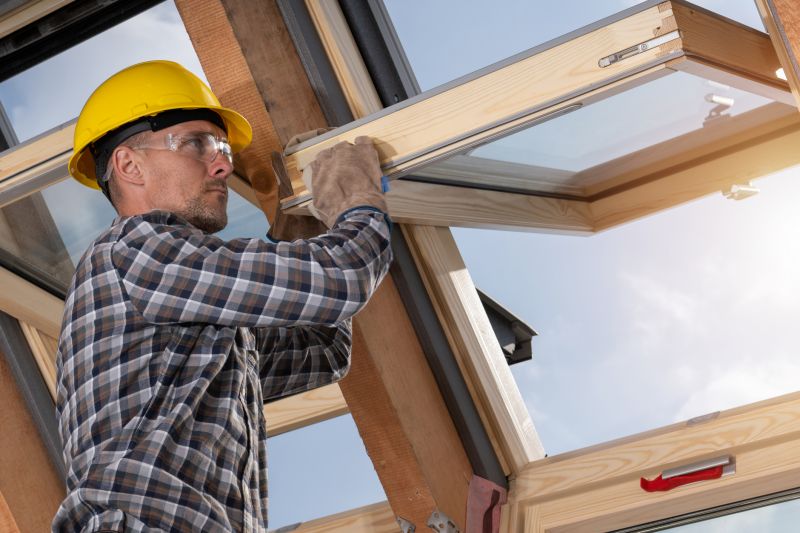Top-Rated Products For Windows Installation And System Optimization
Select from the best equipment and accessories that support a smooth installation and enhance overall system performance.
 Installing or upgrading windows in a building requires a combination of the right products and tools to ensure a secure, durable, and aesthetically pleasing result. Whether you're a professional contractor or a DIY enthusiast in Alsip, IL, selecting quality products for window installation can significantly influence the outcome of your project. From weatherproofing materials to insulation and finishing components, the array of available options is extensive, each designed to address specific needs and preferences.
Installing or upgrading windows in a building requires a combination of the right products and tools to ensure a secure, durable, and aesthetically pleasing result. Whether you're a professional contractor or a DIY enthusiast in Alsip, IL, selecting quality products for window installation can significantly influence the outcome of your project. From weatherproofing materials to insulation and finishing components, the array of available options is extensive, each designed to address specific needs and preferences.
Top Overall Option
Comprehensive Window Installation Kit
A complete window installation kit typically includes a selection of essential products such as flashing tape, sealants, shims, and mounting brackets. These kits are designed to provide all the necessary components in one package, simplifying the process for both professionals and DIYers. They often feature high-quality materials that promote durability and weather resistance, making them a versatile choice for various window types and installation scenarios.
Types of Products For Windows Installations
Flashing Tape
Used to prevent water infiltration around window frames, flashing tape provides a waterproof barrier that enhances the durability of the installation.
Weatherstripping
Applied around window sashes and frames, weatherstripping helps improve energy efficiency by sealing gaps and preventing drafts.
Insulation Foam
Expanding foam insulation fills gaps and cavities around window frames, contributing to thermal performance and soundproofing.
Mounting Brackets
These brackets secure the window in place during installation, ensuring stability and proper alignment.
Shims
Shims are used to level and plumb the window during installation, facilitating a precise fit.
Sealants and Caulks
Sealants provide airtight and watertight seals around the window perimeter to prevent leaks and drafts.
Window Spacers
Spacers maintain proper distance between window panes or within framing components, aiding in insulation and structural integrity.
Sill Pan
A sill pan directs water away from the window opening, protecting the structure from moisture damage.
Fasteners and Anchors
These secure the window to the building structure, ensuring stability and safety.
Cleaning Solutions
Specialized cleaners help remove debris and residue during and after installation to ensure a clean finish.
Vapor Barriers
Vapor barriers help control moisture movement, protecting the building envelope.
Trim and Molding
Used for finishing around the window, trim and molding enhance aesthetics and conceal installation gaps.
Popular Choices
A versatile sealant used to seal gaps and joints around windows, contributing to weather resistance.
Insulation materials that improve thermal efficiency and reduce energy costs.
Provides a waterproof barrier around window openings, adaptable to various surfaces.
Help achieve precise leveling and alignment during installation.
Ensure secure attachment of windows to framing structures.
Used for sealing around window frames with a flexible, paintable finish.
Prevents water intrusion at the base of the window opening.
Facilitates temporary positioning and sealing during installation.
Fills gaps and insulates around window frames for improved energy efficiency.
Provides a polished look around window edges and covers installation gaps.
Protects the building envelope from moisture infiltration.
Seals interior gaps for improved insulation and appearance.
Prepares surfaces for sealing and finishing products.
Proper window installation begins with understanding the different types of windows and the unique requirements of each. For example, some installations may require specialized flashing and sealing products to prevent water intrusion, while others might focus on energy efficiency through high-performance insulation and weatherstripping. The selection process also involves considering the compatibility of various materials, ease of installation, and long-term durability.
In addition to the core installation components, there are numerous accessories and supplemental products that enhance the process. These include window spacers, mounting brackets, shims, sealants, and cleaning solutions. Choosing the appropriate combination of these products can help achieve a seamless fit and finish, reducing future maintenance issues and improving overall performance.
For those in Alsip, IL, understanding the local climate and building codes can influence the choice of products. Ensuring that materials meet regional standards and are suitable for the weather conditions can contribute to a successful installation. Consulting with local suppliers or professionals can provide valuable insights into the best products for your specific project, ensuring a reliable and efficient window installation process.
Key Buying Considerations
- Compatibility with your window type and material.
- Weather resistance and durability of the products.
- Ease of installation, especially for DIY projects.
- Compatibility with local climate conditions in Alsip, IL.
- Material quality and manufacturer reputation.
- Availability of replacement parts or accessories.
- Compliance with regional building codes and standards.
- Sealing effectiveness to prevent water and air leaks.
- Thermal insulation properties for energy efficiency.
- Ease of removal or adjustments if needed.
- Cost and value for the quality offered.
- Environmental resistance, such as UV stability and corrosion resistance.
- Size and fit for specific window dimensions.
- Compatibility with existing building materials.
- Long-term maintenance requirements.
